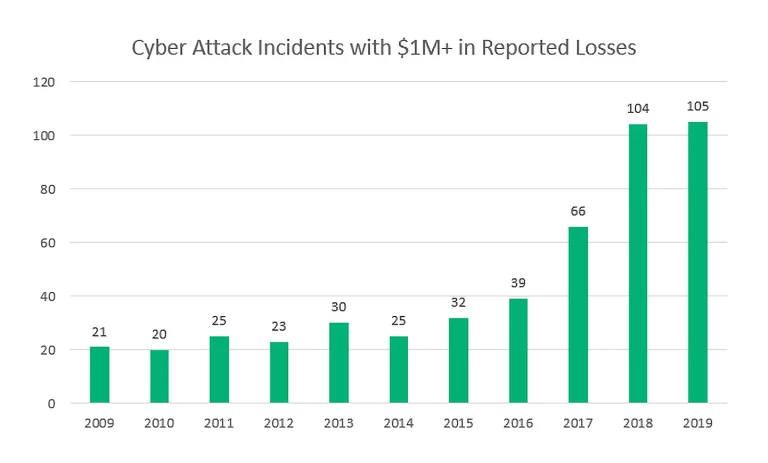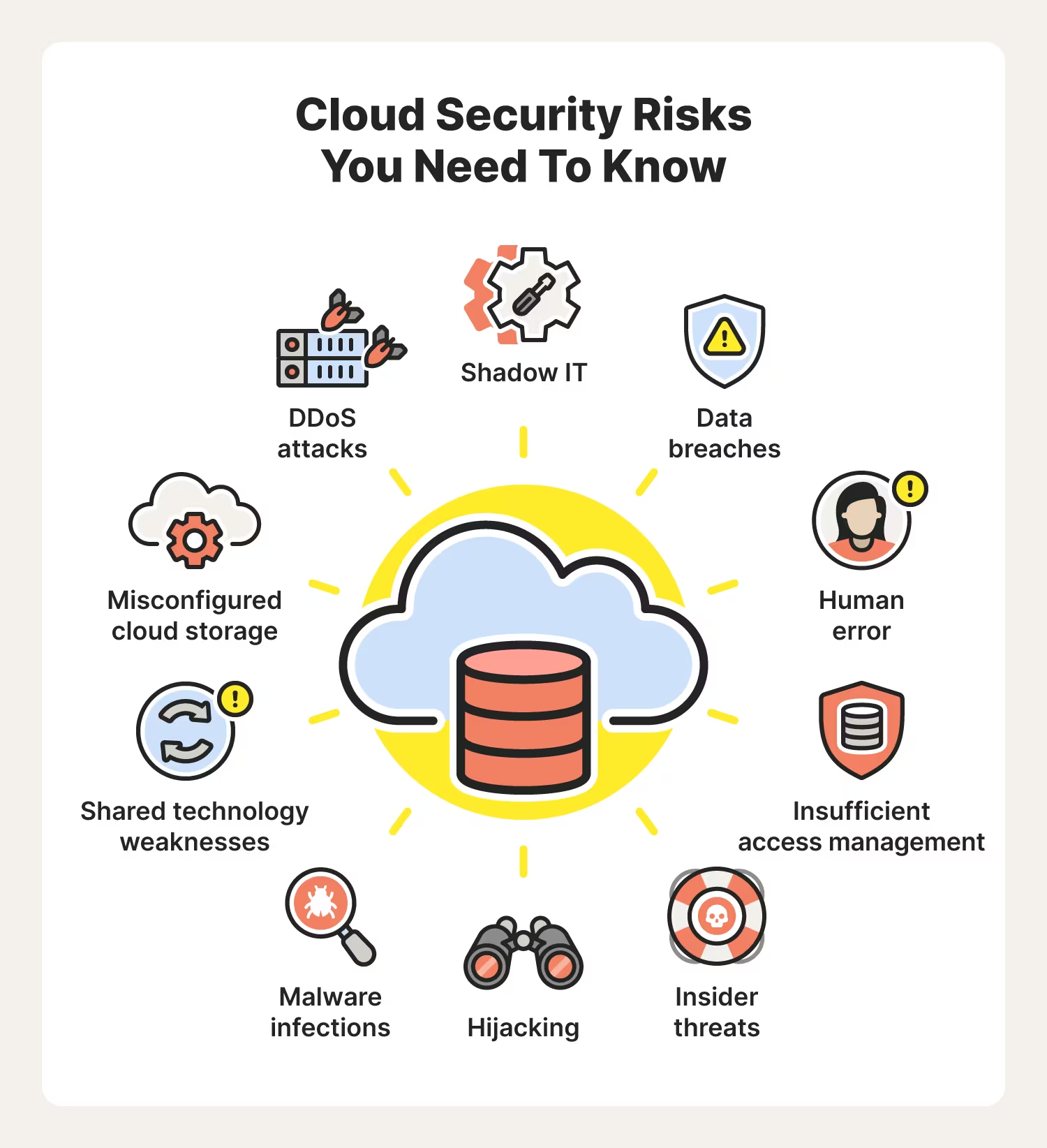Today's Top 10 Cloud Security Threats
To protect your business from cloud security threats, you need to know what the biggest threats are. But it’s also the case that threats to cloud security are changing all the time. Malicious hackers continue to develop new methods for jeopardizing enterprises’ cloud services.
Let’s take a look at the 10 biggest cloud security threats facing organizations today.
1. Data Breaches
Data breaches have been – and continue to be – one of the biggest cloud security threats. This is because compromises to protected data can result in serious financial loss, network downtime, lost productivity, and reputational damage. Misconfigurations of cloud security settings are one of the leading causes of cloud data breaches.
2. Account Hijacking
Phishing attempts have become more targeted and effective in recent years. A threat actor can compromise an organization’s cloud service this way, allowing them to gain access to highly privileged accounts. Once they gain such access, they can steal or destroy crucial data, halt service delivery, or commit financial fraud.
3. Insider Threats
It’s not just outside threat actors that organizations need to be worried about. Insiders – such as current or former employees, contracted workers, or trusted business partners – can threaten cloud security as well. These people may not have malicious intent to cause damage; they could unintentionally put cloud services at risk through negligence, such as misconfiguring cloud servers, storing sensitive company data on a personal device, or falling prey to a phishing email.
4. Insecure Interfaces and APIs
APIs are a common attack vector. API vulnerabilities – especially when associated with user interfaces – can make it easy for attackers to steal user or employee credentials. And the consequences of insecure interfaces can be severe. In 2018, hackers targeted Facebook’s ‘View As’ feature, impacting 30 million accounts.
5. Limited Cloud Usage Visibility
A common complaint that cybersecurity professionals have is that they don’t have access to data that lets them detect malicious activity. For example, sanctioned app misuse could involve an authorized person misusing an approved app; or it could be an external threat actor using stolen credentials. Security teams need relevant data – that shows abnormal activity – to distinguish between valid and invalid users.
6. Weak Control Plane
A control plane encompasses the processes that deal with data duplication, migration, and storage. The control plane will be weak if whoever is in charge of these processes does not have complete control over the data’s infrastructure, security, and verification. Without an understanding of security configuration and architectural weaknesses in relation to these processes, businesses put themselves at risk of data leakage and corruption.
7. Insufficient Access Management
Another cloud security threat is having inadequate access management and control around data and systems. The cloud requires that organizations change practices related to identity and access management (IAM). Not doing so could result in security incidents caused by inadequately protected credentials, failure to use multi-factor authentication, and failure to use strong passwords.
8. Lack of Cloud Security Strategy
Companies may try to minimize the time it takes to migrate systems and data to the cloud, but this focus on being time-efficient often means sacrificing security. The result is that a company will become operational in the cloud using security infrastructure and strategies that are poorly designed for these services.
9. Unauthorized Access
Unlike an enterprise’s on-premise infrastructure, their cloud services are directly accessible from the public internet. This is certainly advantageous for employees and customers, who want to be able to easily access those services. However, this also makes it easier for cyber criminals to gain unauthorized access to a company’s cloud-based resources. Poorly configured security or compromised credentials can allow a threat actor to gain access, potentially without that business even being aware of it.
10. Denial of Service Attacks
The cloud is fundamental to the operations of many businesses. Organizations use the cloud to store business-critical data and to run important internal and customer-facing applications. This is why hackers level denial of service (DoS) and distributed denial of service (DDoS) attacks against enterprises’ cloud services, as this will likely have a major impact on their operations. This puts cyber criminals in a good position to demand a ransom to stop the attack.
As we can see, the sorts of cloud security threats are varied. How can organizations work to combat all of them? Well, each type of threat requires its own solution. On the other hand, there are general steps that you can take if you want to improve the overall security of your cloud services.
We recommend investing in AI, as the benefits include capabilities like event prediction, automated detection and action, robust data controls, and delegating tasks to automated technologies.
Moreover, if you think your business is struggling with meeting the demands for improving cloud security, it may be best to utilize a high-quality managed services provider (MSP). They will be able to offer industry expertise, the latest technology, and data backup and recovery plans. By outsourcing cloud-related tasks to an MSP you can trust, you will be able to lessen your work pressures while also feeling confident that your security needs will be taken care of.


